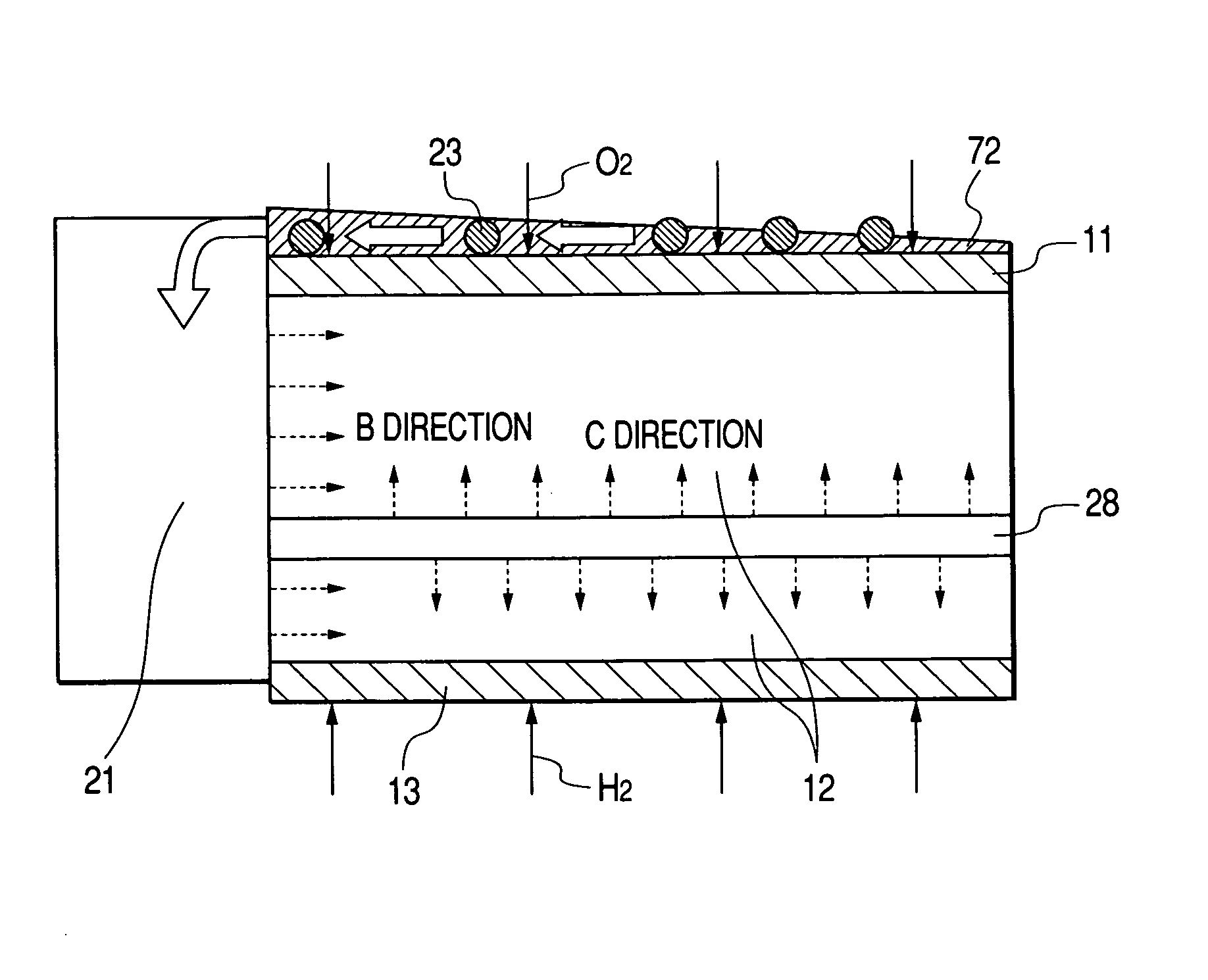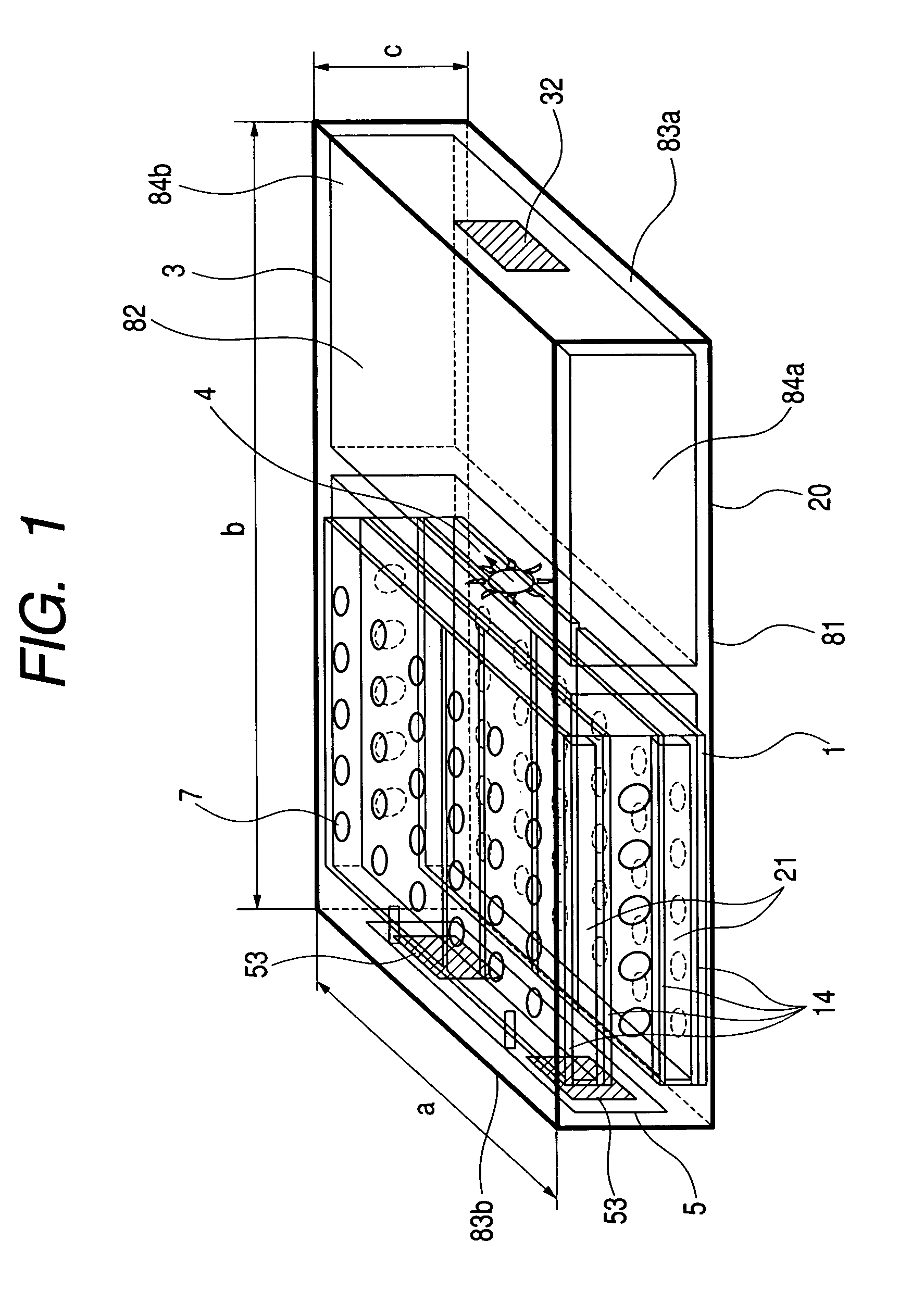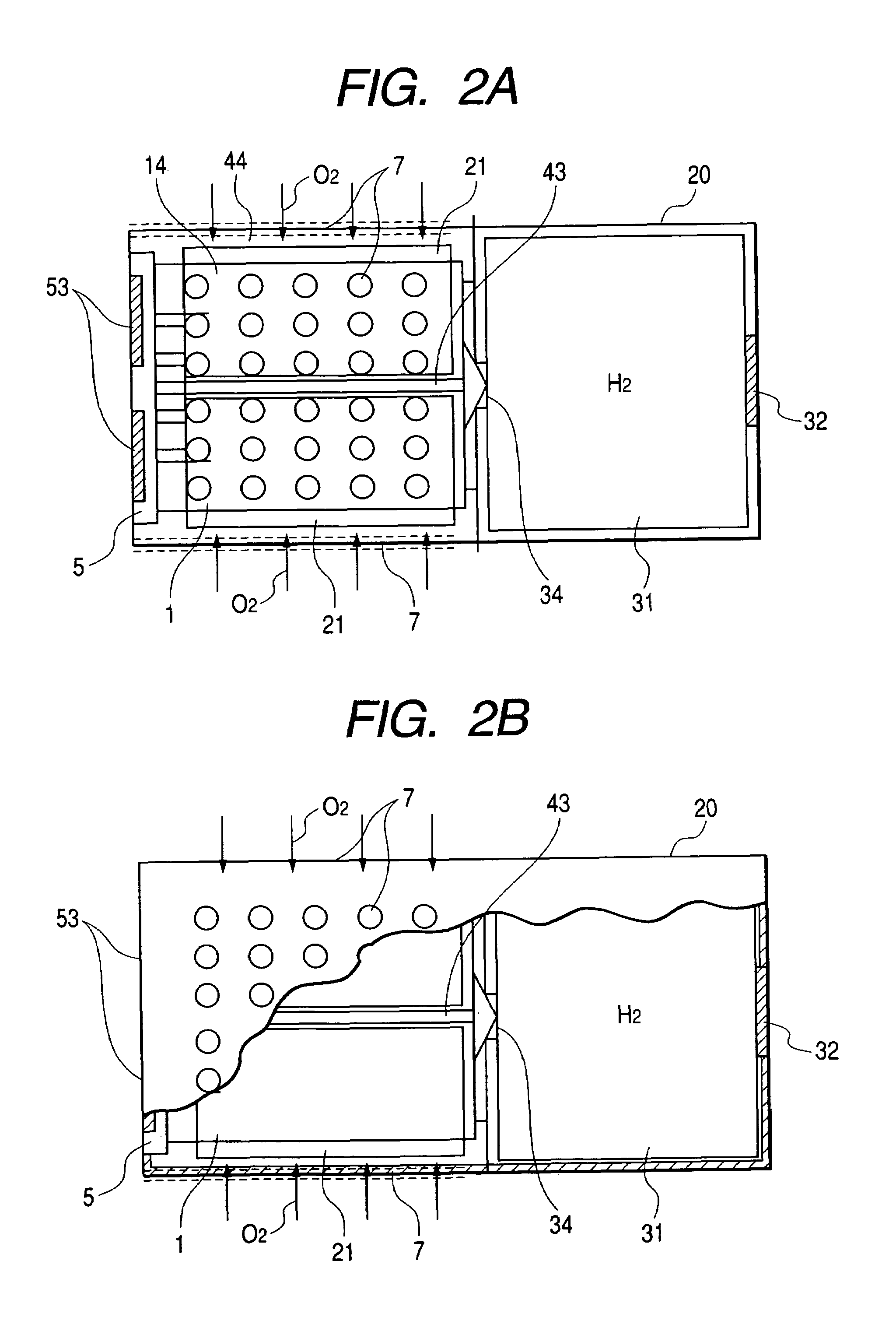Fuel cell and electric apparatus
a technology of fuel cell and electric equipment, applied in the direction of fuel cells, regenerative fuel cells, cell components, etc., can solve the problems of increasing power consumption, difficult to provide a primary battery that can supply sufficient energy, and difficult to use a secondary battery at once at any time and in any location
- Summary
- Abstract
- Description
- Claims
- Application Information
AI Technical Summary
Benefits of technology
Problems solved by technology
Method used
Image
Examples
first embodiment
[0064]A fuel cell system according to a first embodiment of the present invention does not humidify a fuel, but has a humidifying means for directly humidifying a polymer electrolyte membrane.
[0065]FIG. 6 is a schematic cross-sectional view of a cell unit that comprises a humidifying means. As shown in FIG. 6, the present invention is characterized in that as the humidifying means 2a, a water holding unit 21 comprised of a water-absorbing material is provided at a position in contact with a polymer electrolyte membrane serving as an ionic conductor to directly humidify the polymer electrolyte membrane 12 serving as the ionic conductor utilizing an capillary action using water stored in the water holding unit, and more preferably that in order to moisten the polymer electrolyte membrane more rapidly and more uniformly, a humidification water passage 28 comprised of a hydrophilic material and connected to the water holding unit is provided in the polymer electrolyte membrane. Incident...
second embodiment
[0069]A fuel cell system according to a second embodiment of the present invention is characterized by having a water-moving pattern comprising a hydrophobic region and a hydrophilic region on a surface of an oxidizer electrode and water generated in the oxidizer electrode is moved by the water-moving pattern to be eliminated.
[0070]FIG. 6 is a schematic cross-sectional view of a cell unit having a humidifying means; FIG. 7 is a schematic view showing a water-moving pattern provided on a surface of an oxidizer electrode; and FIG. 9 is a schematic cross-sectional view showing one example of a water holding unit that stores water generated in a surface of an oxidizer electrode. That is, as shown in FIGS. 6, 7 and 9, in the present invention, by forming on a surface of an oxidizer electrode 11, a water-moving pattern 22 (water-moving means) comprised of a hydrophobic region 24 and a hydrophilic region 25 so that water moves in one direction, water 23 generated on the surface of the oxid...
third embodiment
[0072]A fuel cell system according to a third embodiment of the present invention will be explained in the following. The third embodiment is characterized in that as a water-moving means in place of the water-moving pattern of the second embodiment, a porous layer is provided on a surface of an oxidizer electrode of a cell unit in which the pore (hole) diameter of the porous material gradually becomes smaller in the water discharging direction, and the number of pores per unit volume (i.e. density) of the porous material gradually becomes greater in that direction. Such a porous layer allows the water generated in the oxidizer electrode to be removed.
[0073]FIG. 10 is a plan view of a cell unit having on the surface of an oxidizer electrode 11, a porous layer 71 in which the pore diameter of the porous material gradually becomes smaller in the A-direction. FIG. 11A is a cross-sectional view taken along line 11A-11A of FIG. 10. FIG. 11B is a schematic cross-sectional view of the poro...
PUM
| Property | Measurement | Unit |
|---|---|---|
| height | aaaaa | aaaaa |
| width | aaaaa | aaaaa |
| length | aaaaa | aaaaa |
Abstract
Description
Claims
Application Information
 Login to View More
Login to View More - R&D
- Intellectual Property
- Life Sciences
- Materials
- Tech Scout
- Unparalleled Data Quality
- Higher Quality Content
- 60% Fewer Hallucinations
Browse by: Latest US Patents, China's latest patents, Technical Efficacy Thesaurus, Application Domain, Technology Topic, Popular Technical Reports.
© 2025 PatSnap. All rights reserved.Legal|Privacy policy|Modern Slavery Act Transparency Statement|Sitemap|About US| Contact US: help@patsnap.com



